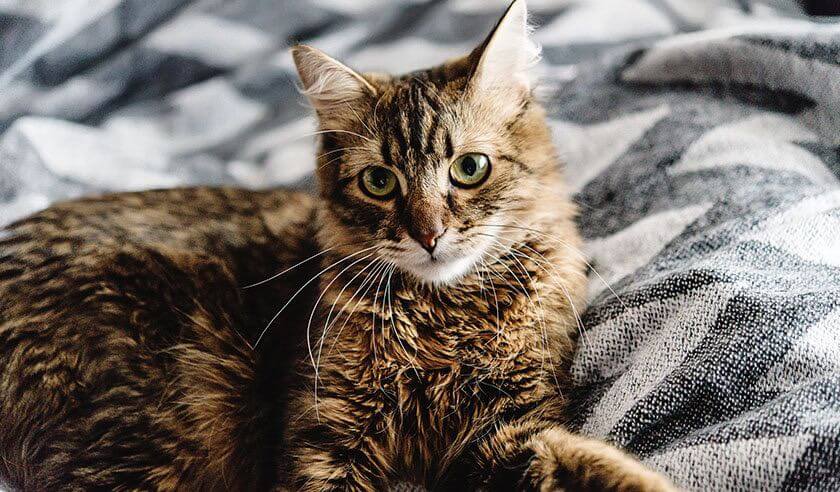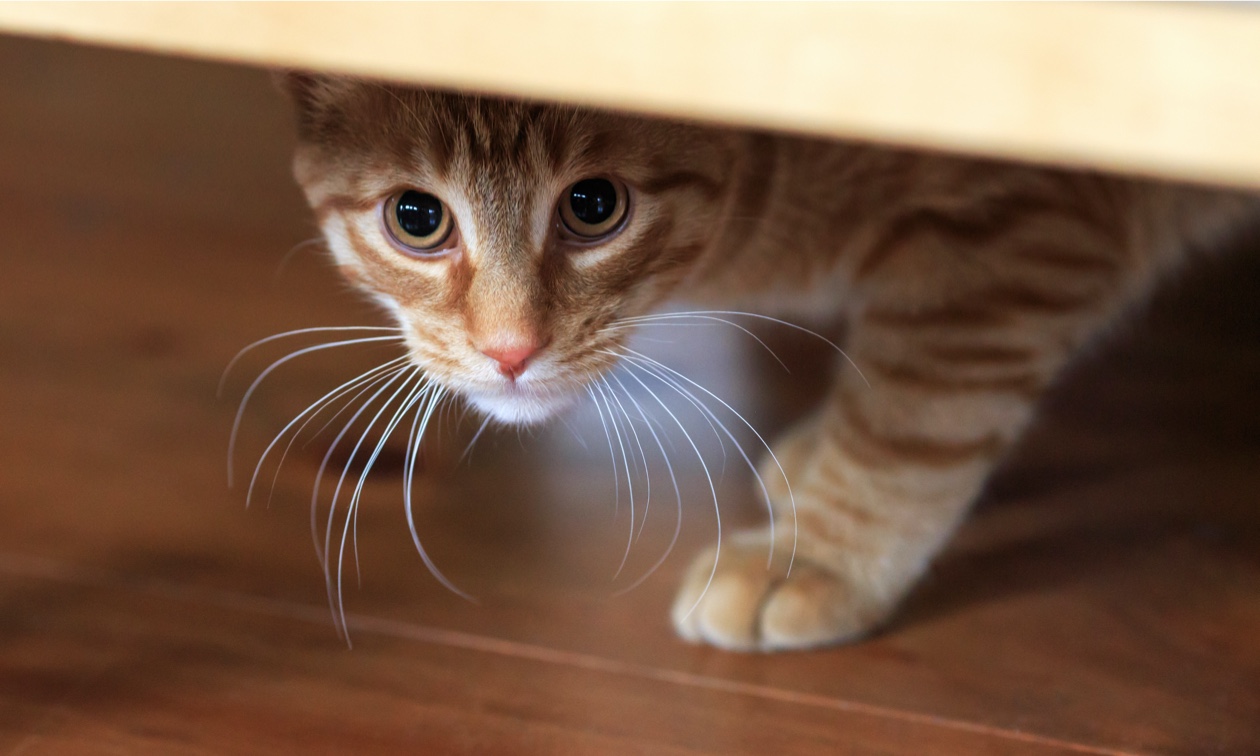Have you ever sprinted up a flight of stairs and been unable to catch your breath when you reached the top? Or have you been hugged so tight that it felt like the air was squeezed out of your body? That feeling of tightness and being unable to breathe is similar to what your cat feels if they have an asthma attack. Understanding asthma triggers and symptoms can help you manage your cat's condition and keep them feeling as healthy as possible.
What is Cat Asthma?
Feline asthma is a respiratory condition caused by an allergic reaction to inhaled allergens, particles that stimulate a cat's immune system, affecting the lower airways. When your cat is exposed to an allergen, it triggers a chain reaction of events. The airways are filled with several different types of immune cells. These cells cause the production of substances that create inflammation in the airways. The airways become irritated, swollen, and constricted. Then mucus accumulates in the narrowed airways. The result is limited air movement through the lungs, which causes difficulty breathing — an asthma attack.
What Triggers a Cat Asthma Attack?
Knowing what triggers your cat's asthma attack is critical in helping lessen the frequency and severity of the attacks. To help determine your cat's triggers, keep a diary of when the attacks occur (date and time), the severity of the attack, and the treatment you provided. Some suspected triggers include:
- Dust, especially from cat litter
- Dust mites
- Pollen
- Grass and weeds
- Smoke, including from tobacco, fireplaces, wood stoves, and candles
- Mold and mildew
- Household cleaning products
- Aerosol sprays
- Air fresheners
- Fabric softeners
- Perfumes
- Carpet deodorizing powders
- Certain foods
What Are the Symptoms of Cat Asthma?
An asthma attack is just as scary for your cat as it is for you. That is why it's vital to recognize the symptoms so that you can take action.
Many cat owners feel an asthma attack looks like their cat is trying to vomit up a hairball due to the similarities in body posture. Particularly if your cat has known allergies or asthma, it's important to know what to look for. During an attack, cats extend their neck and get in a hunched position close to the ground. Your cat's sides may be moving in and out quickly as they are trying to breathe. Often, they are wheezing, coughing (sometimes mucus comes up), and possibly drooling.
Any time your cat is having breathing issues, or you notice that they are taking more than 40 breaths per minute while resting or sleeping, seek veterinary care immediately. A normal respiratory rate is 24 to 30 breaths per minute.
Other common symptoms include:
- Rapid breathing or increased effort to breathe
- Open-mouth breathing
- Wheezing
- Continuous cough
- Gagging
- Swallowing frequently
- Gurgling sounds from the throat
- Production of foamy mucus when coughing
- Bluish lips and gums
- Weakness and lethargy
- Flared nostrils when breathing
How is Cat Asthma Diagnosed?
There is no single test that can be done to diagnose asthma. Diagnosis requires ruling out other medical conditions that cause respiratory symptoms, such as:
- Heart disease
- Pneumonia (bacterial, fungal, or viral)
- Lungworms
- Cancer
A complete physical examination and multiple diagnostic tests are necessary to determine the cause of the respiratory symptoms. The tests that may be recommended include:
- Complete blood count (CBC) to check for elevations in certain cell types that can indicate infection, allergic events, or parasites
- Blood chemistries to assess general organ function and blood protein levels
- Fecal evaluation to check for parasites
- Urinalysis to rule out urinary tract infections, kidney issues, and other possible medical conditions
- Blood pressure check to screen for high blood pressure
- Heartworm testing and possibly follow-up tests to rule out heartworm
- Chest radiographs to assess changes in the lungs and heart
- Echocardiogram to assess the heart
- Bronchoscopy to visually examine the airways using a flexible scope
- Bronchoalveolar lavage to look at mucus from the smaller airways for microorganisms and certain cell types
What is the Treatment for Cat Asthma?
Cats are often treated at home unless they are in respiratory distress. Hospitalization is necessary for cats in respiratory distress or having breathing difficulty. They will need oxygen therapy and/or intravenous medications until stable.
There is no cure for asthma. The goal of treatment and management is to decrease the frequency and severity of attacks. It is often a combination of one or more of the following:
- Bronchodilators to dilate or open the airways
- Corticosteroids to help decrease inflammation in the lungs
- Immunotherapy to stimulate the immune system to attack allergens
- Medical acupuncture to stimulate the nervous system to help decrease inflammation, boost the immune system, and relieve muscle spasms
The other important aspects of managing asthma is avoiding exposure to triggers and reducing your cat's stress level since stress can exacerbate asthma.
Ways to Help Prevent Asthma Attacks in Your Cat
Cats with asthma can lead normal and active lives with proper management and treatment. To help prevent or decrease the frequency of asthma attacks, try incorporating some of the following techniques.
Manage your cat's environment:
- Use air conditioning and air purifiers with HEPA filters to decrease airborne allergens
- Vacuum and dust daily
- Use dust mite covers
- Keep windows shut when possible
- Keep your cat indoors
Eliminate triggers:
- Have your cat allergy tested for environmental allergens
- Avoid using scented products like perfumes, aerosols, air or carpets fresheners, laundry detergent, etc.
- Avoid all types of smoke
- Use an uncovered litter box and low/no-dust litter
- Disinfect the litter box weekly
Reduce your cat's stress:
- Provide calming treats
- Give plenty of enrichment and interactive play
- Help your cat feel safe by providing vertical space up off the ground
- Resolve any issues with other pets in the home
ZPC-02475





